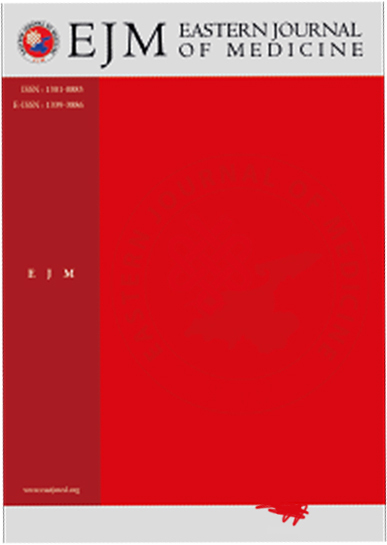Comparison of delivery results of adolescent-age pregnant women and older pregnant women with those in normal age range
Burak Elmas1, Aysegul Bestel2, Ozge Sehirli Kinci31University of Health Sciences Ankara City Hospital, Department of Obstetrics and Gynecology; Ankara/Turkey2University of Health Sciences Istanbul Kanuni Sultan Suleyman Training and Research Hospital, Department of Obstetrics and Gynecology; Halkali/Istanbul/Turkey
3Mugla Sitki Kocman University Education and Research Hospital, Department of Obstetrics and Gynecology; Mugla/ Turkey
INTRODUCTION: The negative results of adolescent (10-19 years) and advanced-age pregnancies (AMA) (>40 years) were compared with the results of the pregnancies considered to be within normal reproductive period (20-40 years) in our study. The complications and poor outcomes that might occur during and after pregnancies in these special periods were also uncovered in this respect.
METHODS: The data of the patients were scanned retrospectively through the automation system, and the patients were divided into 3 groups according to their ages at birth; adolescent (10-19 years), normal (20-40 years old), and AMA (>40 years). A total of 100 patients were evaluated in the adolescent age group, 99 patients in the normal age group, and 76 patients in the AMA group.
RESULTS: Statistically significant differences were detected between the groups in terms of age, weight, and BMI (p<0.05). Statistically significant differences were found between the groups in terms of active phase duration (p<0.05), which was the highest in women in the AMA group (268.5min). Although fetal distress was the cause in the majority of women in the normal and adolescent group (39.1%-56.3%), the reason was found to be maternal anxiety (patient demand) in the majority of women (25.0%) in the AMA group.
DISCUSSION AND CONCLUSION: Early and late pregnancies must be evaluated as a special group, and follow-ups must be planned in this respect. Increased cesarean section rates and decreased pregnancy follow-up status in adolescence may cause increased complications especially in advanced-age pregnancies.
Manuscript Language: English














